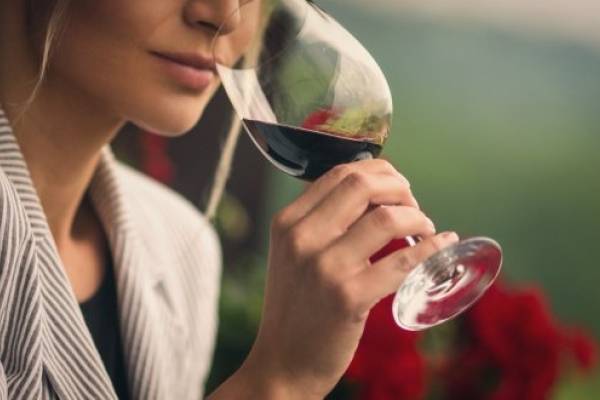
Los sentidos en una Cata de Vinos
La vista
La paleta cromática de un vino en la copa nos permite dilucidar algunos datos que pueden guiarnos sobre la calidad o el estado de consumo de un vino. El color, limpidez y/o brillo pueden orientarnos sobre su edad, baja o elevada graduación alcohólica, etc., datos a tener en cuenta pero que tienen que ser respaldados inexcusablemente por las posteriores fases olfativa y gustativa de la cata.
El olfato
La fase olfativa es posiblemente la más importante a la hora de analizar un vino ya que es el sentido que nos proporciona mayor información sobre el mismo y la que nos aporta recuerdos más complejos y, por tanto, más difíciles de definir.
El gusto
Contra lo que cabría esperar es la fase más esencial a la hora de la cata, ya que el gusto es el sentido que menos sensaciones produce. Las papilas gustativas registran información únicamente sobre los cuatro sabores básicos, el dulce (que estimula las papilas situadas en la parte anterior de la lengua), el ácido (en los laterales de la lengua), el salado (en la zona central) y el amargo (en el fondo de la lengua) -ver capítulo Aromas y Sabores del Vino-.
Sensaciones táctiles
El tacto ofrece diferentes estadios de información al catador. Podemos destacar dos aspectos: en primer lugar, el concepto de temperatura. En este análisis táctil del vino podremos diferenciar el concepto de temperatura en dos vertientes, la temperatura física, los grados centígrados a los que se encuentra el vino en sí; por otro la llamada temperatura táctil, o sensación pseudotérmica que produce un vino dependiendo de su composición.
Por otra parte, el tacto proporciona información sobre el cuerpo o extracto del vino, es decir, sobre la mayor o menor densidad del vino, definida por la mayor o menor presencia de ciertos elementos, como glicerina, materia colorante, etcétera. Un vino bien estructurado o bien armado manifiesta una potencia de sabores que está sustentada por un buen extracto o cuerpo.
The senses in a Wine Tasting
The color palette of a wine in the glass allows us to elucidate some data that can guide us about the quality or consumption status of a wine. The color, cleanliness and / or brightness can guide us on their age, low or high alcohol content, etc., data to be taken into account but which have to be inexcusably supported by the subsequent olfactory and taste phases of the tasting.
The sense of smell
The olfactory phase is possibly the most important when analyzing a wine since it is the sense that gives us more information about it and that gives us more complex memories and, therefore, more difficult to define.
Taste
Against what one would expect is the most essential phase when tasting, since taste is the sense that produces less sensations. Taste buds record information only on the four basic flavors, sweet (which stimulates the papillae located on the anterior part of the tongue), acid (on the sides of the tongue), salty (in the central area) and the bitter (at the bottom of the tongue) -see chapter Aromas and Flavors of Wine-.
Touch sensations
The touch offers different stages of information to the taster. We can highlight two aspects: first, the concept of temperature. In this tactile analysis of the wine we can differentiate the concept of temperature in two aspects, the physical temperature, the degrees Celsius to which the wine itself is found; on the other, the so-called tactile temperature, or pseudo-thermal sensation produced by a wine depending on its composition.
On the other hand, touch provides information about the body or extract of the wine, that is, about the greater or lesser density of the wine, defined by the greater or lesser presence of certain elements, such as glycerin, coloring matter, and so on. A well structured or well-armed wine manifests a potency of flavors that is supported by a good extract or body.



Comentarios
Publicar un comentario